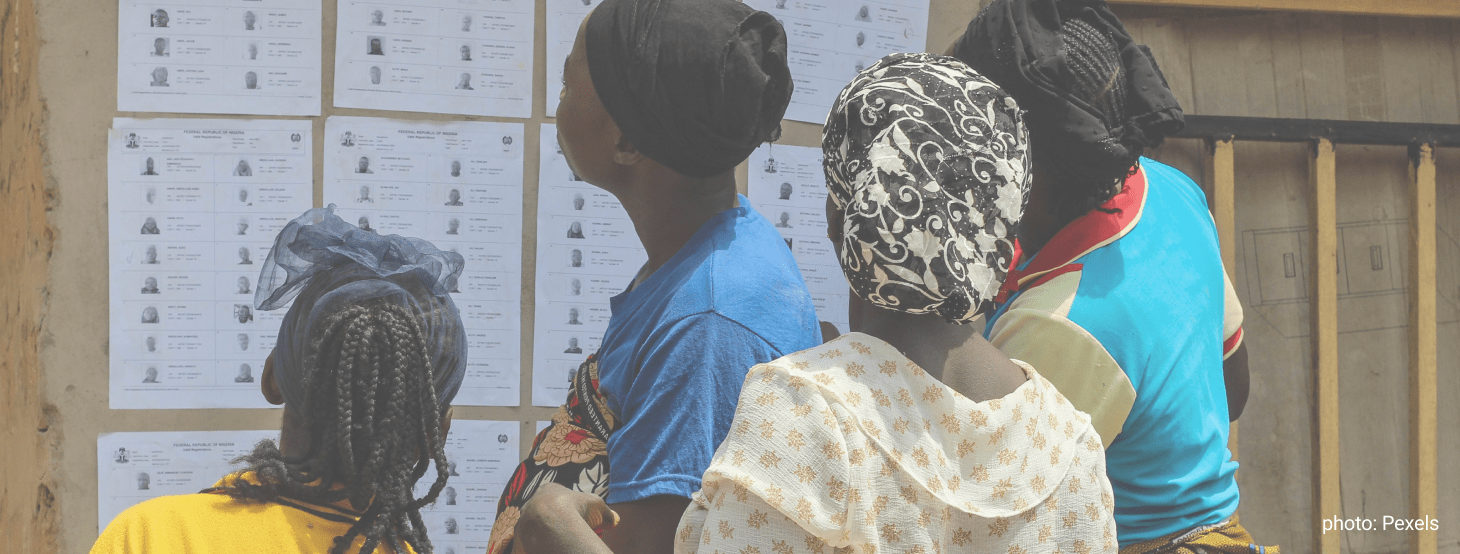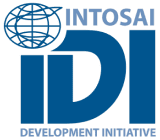To better understand the preconditions for SAIs to successfully execute their mandates, we need to consider their institutional capacities, and their context and environment. The world faces a situation where 35 years of advances in global levels of democracy have been wiped out, moving us back to 1986-levels.1V-dem Democracy Report 2023. V-Dem Institute. Democratic levels are the same as they were during the third wave of democratisation, a period that started in the seventies and continued until the nineties.2See for example O’Donnell Guillermo and Huntington Samuel. According to the Varieties of Democracy (v-dem) Democracy 2023 report, in 2022 72% of the world’s population – 5.7 billion people – lived in autocracies.3V-Dem produces the largest global dataset on democracy with over 31 million data points for 202 countries, collected by scholars and researcher for over 100 attributes of democracy. Compared to 10 years ago, 35 countries are facing deterioration of civil liberties, where only seven did so in 2012. Throughout this report Global Survey results have been analysed against relevant indicators from the V-dem data, in order to better understand the trends we see in global SAI Performance.

[1] V-dem Democracy Report 2023. V-Dem Institute.
[2] See for example O’Donnell Guillermo and Huntington Samuel.
[3] V-Dem produces the largest global dataset on democracy with over 31 million data points for 202 countries, collected by scholars and researcher for over 100 attributes of democracy.
According to V-dem, “Horizontal accountability concerns the power of state institutions to oversee the government by demanding information, questioning officials and punishing improper behaviour. This form of accountability ensures checks between institutions and prevents the abuse of power”.4V-dem Codebook. The V-dem index on democratic and global development shows that the negative trends affect horizontal accountability, the accountability between state institutions. Vertical accountability and diagonal accountability are equally important for democracy, with the first referring to the ability of the populations ability to hold its government accountable through elections, and diagonal accountability covering the oversight by civil society organisations and media activity.5Ibid. These are not explored in this report, but it’s important to mention that the negative trend also is found for these aspects of accountability.
The responses to the Global Survey 2023 have been analysed based on the hypothesis that global trends also affect the public space for accountability, and the environment for holding government accountable for their performance and actions. The v-dem index shows a global decline over the last 10 years, echoed in almost all regions, and with a negative development in horizontal accountability in ARABOSAI, CREFIAF, EUROSAI, OLACEFS and North America.

[4] V-dem Codebook.
[5] Ibid.

Lessons on SAI data analysis against external variables
Following the GSR2020, an analysis (unpublished) studied the existence of linear relationships between SAI performance and SAI independence and global trends, such as democracy levels, accountability levels and civil liberties. These trials showed that the characteristics of the survey data, combined with the sample size, make it difficult to determine strong direct causal relationships through regression analysis, although the analysis can reveal degree of correlation between two variables.
A possible working hypothesis is that the combination of different levels of institutional, organisational and professional capacities that constitute SAI performance, makes it less meaningful to identify separate external variables which will have single measurable effect on the overall capacity. Rather, the different types of capacities affect each other, and reduce likeliness of detecting individual contextual variables that explains SAI performance on a global level.

SAI Independence continues to regress
This section examines the development of the SAI Independence index, which is built up by indicator scores based on the eight principles in INTOSAI P-10, the Mexico Declaration on SAI Independence. In this section we focus on global results, as well as regional trends. We also present the independence principles that seem to most affect the overall results. In the next section we discuss findings related to external interference, and finally results on freedom of publication.
The GSR 2023 is the third consecutive GSR that reports reductions in SAI independence. The SAI Independence Index for 2023 provides an average score of 73 points across all eight principles of the Mexico Declaration and all SAIs. Comparing SAIs that responded to both the Global Surveys in 2020 and 2023 results shows a one-point decline in overall results.
While all fluctuations compared to GSR2020 will affect the global score, we will here focus on the reductions in Principle 1, adequacy of legal framework, Principle 4, access to information and Principle 8, financial and administrative autonomy. Analysis indicates there is not one contextual variable that can explain the SAI Independence Index levels, but there is a pattern of higher scores in the index for SAIs in countries with higher levels of horizontal accountability. In general, SAI independence scores seems to rise with levels of democracy and horizontal accountability.
As in previous Global Surveys, SAI independence appears to be a bigger challenge in ARABOSAI, CAROSAI and CREFIAF than in other regions. CAROSAI appears to be especially vulnerable with a big drop in index results since the last GSR, down nine points down for those SAIs who responded to both surveys. Other regions with a notable drop were OLACEFS and ASOSAI, while EUROSAI results indicate an improvement. ARABOSAI notes a large improvement, up five points compared to GSR2020.

The analysis starts with Principle 1 of the Mexico Declaration, the existence of an appropriate and effective legal framework. The Index shows a slight decline since GSR2020, from 68 to 66 points for SAIs finding that their legal framework adequately prescribe SAI independence. Comparison of regional results to GSR2020, show there has been a small noticeable reduction in average scores in AFROSAI-E, CREFIAF and OLACEFS.
Like in GSR2020, inadequacy of legal framework predominately remains an issue in Lower Income countries.6The report use the World Bank Income classification. Countries classified as(Low-Income) LI countries, (Lower-Middle Income (LMI) countries and Upper-Middle Indicator (UMI) countries are here jointly referred to as lower income countries, unless something else is specified. In cases where the text refers to developing countries as a group, in connection with receipt of support, development countries are used as an indication that they are eligible for support according to the OECD DAC-list. In AFROSAI-E, CREFIAF and PASAI only 20% of SAIs report that the legal framework is fully adequate, and in CAROSAI, no SAIs find that the legal framework is fully adequate. SAIs in these four regions move closer to the global average when we include the SAIs who found that the legal framework mostly meet the requirement, but they remain below the global average.
[6] The report use the World Bank Income classification. Countries classified as Low-Income (LI) countries, Lower-Middle Income (LMI) countries and Upper-Middle Indicator (UMI) countries are here jointly referred to as lower income countries, unless something else is specified. In cases where the text refers to developing countries as a group, in connection with receipt of support, development countries are used as an indication that they are eligible for support according to the OECD DAC-list.
We see a correlation with democracy levels, as SAIs in liberal democracies find the legal framework to be fully adequate in 62% of cases, against only 32% in any other regime type. The difference is also observed for Fragile States7This report uses the definition of fragile state defined by OECD. that score 54 on indicator 1 against 69 points for non-fragile states. The difference is even more dramatic, when comparing Small Islands Developing States (SIDS), with an average score of 50 against 71 against other countries. The levels of adequacy also correlate positively with income levels as 82% of SAIs from High Income (HI) countries find the legal framework to be fully or mostly adequate, while the proportion descends according to income level groups, down to 48% of SAIs in the LI Countries.
The last GSR revealed a sharp drop in scores on Principle 4 on access to timely, unconstrained, and complete information. This trend continues, with a three point drop since 2020. 46% of SAIs responded that they had “full” access to information in the Global Survey 2023. While the low number of SAIs with full access is concerning, the analysis also reveals a deterioration of the SAIs who although they didn’t have full access, could, according to GSR2020, mostly access information without meeting restrictions. In fact, the global decline could be explained by a shift from SAIs having “mostly” access to information, to SAIs only having limited or no access to information. Regional distribution data suggest all regions have experienced increased challenges in accessing information.
In ASOSAI, ARABOSAI, CAROSAI and CREFIAF, 20% of SAIs have experienced limitations on access to information to such an extent that it has become difficult to properly discharge their audit responsibilities. The global results could likely be due to restriction (including emergency laws) during COVID-19. However, analysis does not suggest there is a very distinct difference in access to audit information, between SAIs who did COVID audits and SAIs who did not.
Another explanation could be linked to the overall quality of the public administration. As in the GSR2020 we see a correlation between levels of access to information and impartiality of the public administration.8This question focuses on the extent to which public officials generally abide by the law and treat like cases alike, or conversely, the extent to which public administration is characterized by arbitrariness and biases. Source V-dem. The analysis uncovers that SAIs in countries where impartiality of administration is in the top-third tier, in general had better access to information. Inversely SAIs in countries where levels of clientelism are higher, experienced more interference. This suggests that while global crisis and shock on country level, in part, and on country-by-country basis could explain operational challenges faced by SAIs, it is more likely that that these stem from more systemic issues. It also confirms that global crisis merely exacerbate inherent weaknesses in the governance and accountability system, and that impartiality and respect for legal frameworks are a necessity for the chain of accountability to properly function.
[7] This report uses the definition of fragile state defined by OECD.
[8] This question focuses on the extent to which public officials generally abide by the law and treat like cases alike, or conversely, the extent to which public administration is characterized by arbitrariness and biases. Source V-dem.
The final result in this section is the four-point drop since the GSR 2020 on Principle 8, SAI financial and administrative autonomy. As in 2020, low scores in AFROSAI-E, CREFIAF and CAROSAI lead to an overall low score of 62 points. The indicator is based on results regarding budget process, administrative and financial autonomy.

The analysis reveals that the national country system may affect the preconditions for financial autonomy. For principle 8 the average score increases according to income level. Another interesting finding is that the score of principle 8 correlates positively with the level of budgetary transparency as measured in the Open Budget Index. The survey shows that globally, only 20% of SAIs submit their budget directly to the Legislature for adoption, and 74% of SAIs submit it first to the Ministry of Finance who determines the budget before submitting it to the Legislature. Therefore, the Legislature has a limited role in ensuring that the SAI has sufficient and appropriate resources to fulfil its mandate. Aligned with the global results, results across regions are low, and direct submission is most common in EUROSAI and ASOSAI, with 36% and 29% respectively. Once the budget is approved, still only 41% of SAIs have the autonomy to manage their organisation’s budget fully.
Although numbers are higher for HI-countries, they are still low with only 53% stating that they have full discretion in the budget management.
When it comes to the practical application of the budget law framework, the same proportion of SAIs, 44%, reported to have experienced interference from the Executive regarding their budget process. This interference could include cuts in proposed budgets, holding back payments and late issuing of funds. This means that almost half of all SAIs are hampered in planning and execution of audit programmes due to this interference. Interference happens more often in SIDS and Countries in Fragile Contexts. The level of interference is the same as in GSR2020. (73 SAIs reported interference).
Globally, 57% of SAIs experience to having full control of the management of its office. This is most common in North America, EUROSAI and ARABOSAI. Levels of accountability in the country system seems to increase the likelihood of having full control of both budget and organisation, suggesting that higher levels of accountability may foster a culture of administrative autonomy. While only half of the SAIs in countries with low levels of horizontal accountability had full control over administrative and organisational management, there was a positive correlation seen, as almost 75% experienced having control in countries with higher levels of accountability. This can be observed through the yellow bars in the graph below. Other findings that support this are survey results that show that an increase in full control of recruitment of staff (senior, technical and administrative) correlates with an increase in horizontal accountability levels.


Reported Interferences on the rise
The Independence Index results suggest that declines in SAI independence levels can be explained both by legal limitations (de jure), as well as practical challenges (de facto) in the audit work. The IDI SAI Independence Rapid Advocacy Mechanism (SIRAM) receives and follows up expressions of concern on SAI independence and reported instances on interference. There has been an increase in the number of reported cases since SIRAM was established, with a doubling from 3 cases in 2020 to 7-8 cases per year during 2021-2023, suggesting that interference is rising.
Given the global context and development captured by SIRAM, the GSR2023 has looked at the executive interferences reported through the Global Survey 2023. The aim has been to assess whether data suggests there has been an increase, and if so, if the increase could be linked to any global developments. Below, the analysis of Global Survey responses and their accompanying indicators in the Independence Index are presented. This relates to Principle 2, the independence of SAI heads and members (of collegial institutions), including security of tenure and legal immunity in the normal discharge of their duties, and Principle 3 on a sufficiently broad mandate and full discretion, in the discharge of SAI functions. Interference in budget management have already been discussed in the last section. Another area where there is likely to be interference is the right to report and publish results. The results for this principle are discussed in the next section.
While the legal framework should ensure SAIs have the appropriate independence, it should also prescribe measures for protection against executive interference. Legal protection of interference against SAIs seem to be limited globally. In the Global Survey 2020 only 39% of SAIs stated that their legal framework gives the SAI the right to appeal to the Supreme Court against alleged interference by the Executive. The Global Survey 2023 indicates a small improvement, with the figure rising to 43%. There is an increase in AFROSAI-E from 28% (of 18 SAIs) to 39% (of 23 SAIs), while in PASAI there seems to be a sharp decline, from 56 % to 39%, although this could be partly due to a change in composition of respondents. These results show us that many SAIs are limited in their ability to appeal to higher entities to resolve alleged independence threats from the Executive, which is concerning.

Principle 2 of the Mexico Declaration deals with the independence of SAI heads and members (of collegial institutions), including security of tenure and legal immunity in the normal discharge of their duties. In cases where government entities or representatives are feeling exposed through SAIs’ reports or operations, threats of retaliation could be targeted directly against the Head of the SAI, and cases show that threats and removal of leadership can paralyse the entire operations of the SAI. The protection of SAI leadership is therefore an important principle. Principle 2 focuses on whether the legal framework for nomination and dismissal is in place in terms of ensuring independence from the Executive, and whether it ensures that the Head of SAI can operate autonomously. The indicator measuring this in the SAI Independence Index, reveals this as the indicator with the highest score of 0.86 points, which implies a small improvement since GSR2020. In fact, 92% of SAIs confirm their legal framework specify conditions for appointment and reappointment. The proportion of country legal framework that specifies protection of Head of SAI regarding dismissal, legal immunity, and security of tenure, are lower with 80% having this in place. While this is positive, there is also a need to further study which institution is responsible for the designation and dismissal of Heads of SAIs, to better understand the dynamics in cases where there is unlawful appointment and dismissal of leadership.
The positive results for conditions in the legal framework have created a need to better understand better the extent of interference. The Global Survey asked about SAIs’ experience of interference from the Executive. Responses reveal that 10% of Heads of SAIs have experienced undue executive interference in conducting their audit mandates during 2021-2023, which aligns mostly with the results from the SIRAM.9Differences could be due to respondent sample, time for reporting and changes in SAI leading to SAI not reporting in the Global Survey. Analysis suggests interference against Heads of SAIs are correlated with low democracy levels and takes place most frequently in LI countries. It was more prevalent in CAROSAI and CREFIAF, regions that rank lowest amongst the INTOSAI regions in the Independence Index. They are followed by PASAI. In CREFIAF 47% lack legal protection against unlawful dismissal which makes these SAI even more at risk, because they do not formally have the lawful protection against undue interference from the Executive.

[9] Differences could be due to respondent sample, time for reporting and changes in SAI leading to SAI not reporting in the Global Survey.
According to the Mexico Declaration Principle 3, SAIs should have sufficiently broad mandate and full discretion, in the discharge of its’ functions. When it comes the SAI’s discretion in selection of audit programme and the following conduct of the audit, the SAI Independence Index shows a three point drop globally, since the last Global Survey. OLACEFS is the region fairing the worst, with 34% of SAIs being severely limited in their ability to select their audit programme, and with 27% reporting limitations in the planning and conduct of the audit. They are followed by CAROSAI, where 31% and 26% report the same level of interference, in selection and conduct of audit programmes, respectively.
Overall, 15% of SAIs report that they have experienced severe interference in the selection of the audit programme, which is the same level as the GSR2020. The overall decline seems to be due to fewer SAIs having experienced full freedom in the selection and conduct of their audits, while the number of SAIs in dire conditions remains the same.

Examining external factors shows there is a pattern where characteristics of context and governance apparently affect the levels of Executive interference. For example, in countries in fragile contexts, only 56% of SAIs reported having been free to programme, plan and conduct audits against 80% in countries in non-fragile contexts. Freedom in selecting audit programmes also increases with higher levels of democracy, as the graph above shows, with almost a doubling of freedom from interference when comparing closed autocracies and liberal democracies. Similarly higher levels of horizontal accountability is linked to increased freedom in selection of audit programme. This finding is further strengthened by the correlation of higher levels of freedom in planning and levels of diagonal accountability, which cover the mechanisms citizens and media use to hold government accountable, which can help strengthen horizontal accountability. This could suggest the observed deterioration of SAI abilities to conduct their mandates freely could be linked to the global developments.

A decline in SAI public reporting
The Mexico Declaration Principles 5 and 6 relate to the right of the SAI to report on their work. Principle 5 outlines the right and obligation to report, while principle 6 outlines the freedom to decide on content and timing and to publish and disseminate the results. From experience, we know that submitting a report with potentially compromising or sensitive information remains a challenge for some SAIs. Therefore, this aspect of reporting, has been separated out compared to GSR2020 where principle 5 and 6 were measured together through reported independence in the publication of audit reports. In the Global Survey 2023, SAIs were asked directly about the submission of report. Results showed that 16% of SAIs report that they were severely obstructed from submitting audit reports, and 75% experience to be fully free to report.
In addition to the right to report on their work to main stakeholders, it is also important to make audit reports public, as a way of increasing transparency and holding the Executive to account. As the SAI Independence Index showed, there is a two points decline since the last GSR for Principle 6, the freedom to publish and disseminate audit results. 66% of SAIs experienced full freedom to publish reports. Levels are the same for deciding on content and timing of publication. 14% of SAIs reported to have no had no freedom to publish audit reports.
Like in GSR2020, the latter result aligns with the 14% of SAIs who did not publish any audit reports. Globally, on average 69% of audit reports were published. This is a decline from the 77% reported in 2020. The number of audit reports varies greatly according to mandate and activity levels of the SAIs. These results are further presented in chapter 4.

This decline is concerning and begs the question whether the levels of transparency in reporting and publication of SAI reports, could be linked to openness in society overall. As mentioned, there has been a decline in the civil liberties index. Overall, the SAI level independence results seem to have a limited effect on publication, which again seems to stem from the complexity for aspects SAI Independence covers, and how the different aspects of SAI independence seem to interact. Still, there is a fairly strong correlation between the level of civil liberties and the percentage of audit reports published, which could suggest that SAIs operating in societies where civil liberties are endorsed and protected has a better foundation for freely submitting and disseminating their audit reports thereby contributing to transparency. The scatter plot shows how there is a concentration of SAIs performing well both on civil liberties and percentage of reporting, with EUROSAI SAIs being amongst the SAIs who were performing best.


SAI resourcing remains a challenge
The capacity of a SAI depends on a set of institutional, organisational, and professional capabilities. In practice this capacity is underpinned by sufficient financial and human resources to carry out the mandate. The GSR2020 uncovered that only half of SAIs had sufficient financial resources. This remains at similar levels in 2023, with 53% responding the same.
Analysis suggests that adequate financial resources can be linked to SAI Independence. SAIs that confirm having sufficient financial resources, score higher (av. 0.82) than SAIs that don’t (av. 0.64) in the SAI Independence Index. The ability to manage the SAI’s own resources also seems to play a role, with SAIs having sufficient financial resources scoring significantly higher on principle 8 (0.74 vs. 0.49). When we look at contextual factors, we can also identify other areas that seems to be related to financial resourcing, one being the levels of horizontal accountability.
There is an inverse correlation between levels of corruption and SAIs reporting insufficient financial resources, with more SAIs in countries with higher levels of corruption saying they don’t have sufficient financing.
Measuring and comparing SAI budgets across countries, gives limited meaningful information when considering the budget alone. However, when using a proxy, by analysing SAIs budget in terms of budget per capita, we uncover aspects that helps us understand the resource situation better. Notably, analysing budget size against population, shows that the relative budget decreases with population size. Although the budget size is not constant across countries, this is still to be expected. However, the data also show that those SAIs with less resources per capita, also are from LI countries, which confirms that these SAIs are in more challenging situations, and that the inverse correlation is not only determined by the population size, but also by the country’s financial situation. In addition, the data suggest that SAIs with less budget per capita also tends to find themselves in countries where levels of corruption are higher. While we cannot establish if the corruption levels in themselves are contributing to the budget levels, it could suggest that SAIs conducting audit in a context characterised by widespread corruption and small budgets, are facing even bigger challenges in fulfilling their mandates.
SAIs were also asked whether their human resources were adequate. While the topic is treated further under Professional Capacity on audit competencies, it’s worth mentioning a significant difference in adequacy of human resources related to financial resources. The contrast between SAIs who confirm they have sufficient financial resources and SAIs who do not, is striking. Only 10% of the SAIs who report insufficient financial resources find that their human resources are adequate in terms of both competencies and staff numbers, while 60% of SAI who report sufficient financial resources consider staff to be adequate. Furthermore 42% of SAIs who report insufficient financial resources, find their staff is inadequate in numbers, and 37% in both numbers and competencies. This indicates that financial resource situation can play a role in explaining why only 37% of SAIs globally find their staff resources to be adequate. More importantly, it points to resource adequacy in the SAI as an important factor affecting the overall capacity of the SAI. It also suggests that there is a need to look for ways to make SAI operations more effective with the resources available to enable them to fulfil their mandate, for example through capacity strengthening and introduction of governance systems that enables better processes.
The need for more resources is also evident from the Global Survey results on external support for capacity development 83% of developing countries SAIs received support during 2020-2022.10It was 85% in 2017-2019 according to GSR2020. Interestingly, the number of SAIs receiving external support is six percent points lower in Fragile States (77%), and 5 points higher in SIDS (88%), respectively. The difference can be explained by the fact that all SAIs in PASAI received external support in the period, while numbers are lower than average in ARABOSAI and ASOSAI, which also houses some of these fragile states.
Compared to the GSR2020 SAIs are still finding it more difficult to obtain external support when they plan to manage the support themselves. 43% of SAIs found it difficult to obtain support in GSR2020, while 55% did so in the Global Survey 2023. Access to external support for capacity development increases when the implementer is another body. 70% of SAIs find it “mostly easy” or “easy” to obtain financial support when support implemented by another body. This is somewhat concerning if SAI capacity development is to be SAI led and increase coordination of support. As in the GSR2020 difficulties in obtaining support as the implementer correlates with income levels, with low-income countries finding it more difficult than lower and upper middle-income countries.

[10] It was 85% in 2017-2019 according to GSR2020.

To conclude, SAIs are operating in a global context that increasingly could affect their ability to audit government performance and finances independently. In parallel with a wave of democratic decline, SAIs have experienced a negative development in their levels of independence. In certain INTOSAI regions, like CAROSAI, CREFIAF and ARABOSAI, these challenges persist over time, in many cases due to inappropriate legal framework, combined with widespread interference from the Executive. For SAIs in fragile country contexts, free selection of audit programmes, seems to be less common than in other contexts. While the world is feeling the effects of lowered horizontal accountability, SAIs are experiencing a continued limitation in timely access to audit information. A small group of SAIs continues to not publish audits or to experience severe interference in relation to reporting. Personal and political openness of society seem to be related to publication. Finally, half of SAIs struggle with insufficient financial resources, and this furthermore seems to be linked to adequacy in professional staff. The challenges in SAI’s institutional capacity continues to pose a risk to their capability to strengthen accountability and transparency, and for many SAIs their environment intensifies this risk.













